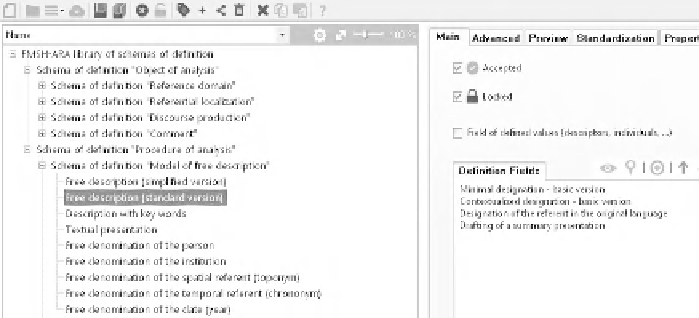Information Technology Reference
In-Depth Information
of
sequences
when it is a question of selecting and positioning not conceptual terms
but rather
genericschemasofdefinition
made up of one or more conceptual terms.
Figure11.9.
Definitionofthegenericschemaoftheprocedureof
Freedescription(standardversion)
Figure 11.9 shows a generic schema belonging to the second class of schemas
identified above, that of the schemas reserved for defining procedures of description.
In our case, it is the procedure of free description, the standard version.
In contrast to the simplified version which can only use one descriptive activity
([Minimal designation - simplified form]), the schema defining the standard version
of the procedure of free description can, as Figure 11.9 shows, call upon four
analytical activities, all of which, of course, form part of the conceptual vocabulary
of the ASW meta-lexicon reserved for the analysis of the audiovisual text. These
activities are: [Minimal designation - simplified form], [Contextualized designation
- simplified form], [Designation of the referent in the original language] and
[Drafting of a summary presentation].
In the same way as the schema shown in Figure 11.8, this schema is defined by a
selection of a set of relevant conceptual terms and by the relationship called
“or
non-exclusive”
or
“inclusivedisjunction”
. This means that the analyst using this
schema can perform one or other or several of the activities identified by the schema
in question to provide information about the object of his analysis. However, there is
an
additional condition
here which the analyst has to respect. This condition
stipulates that if the analyst uses this schema, the descriptive activity called
[Minimal designation - simplified form] becomes both
obligatory
and
presupposed
by all the other activities: using this schema, the analyst must perform the activity
[Minimal designation - simplified form]
before
any other activity.

